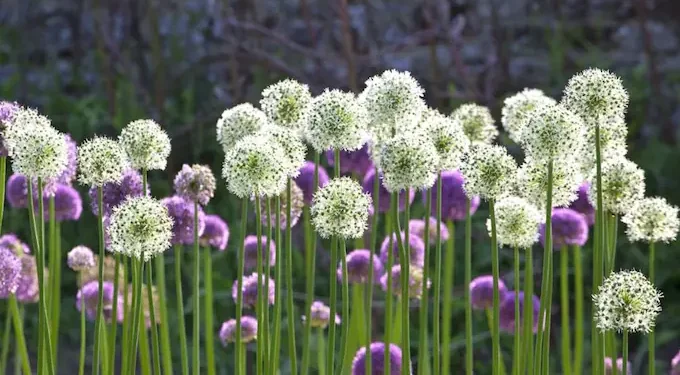Creating a garden that is both beautiful and ecologically sound can be achieved by pairing native ferns with perennials states Tammy Sons at TN Nursery. These plants not only enhance the aesthetic appeal of your garden but also contribute to a sustainable landscape. Here’s how to effectively pair native ferns with perennials to create a lush, low-maintenance garden.
Why Pair Ferns with Perennials?
Complementary Growth Habits: Ferns and perennials often have complementary growth habits, with ferns providing lush, green foliage and perennials offering colorful blooms. This combination adds visual interest and texture to your garden.
Extended Seasonal Interest: While ferns provide consistent greenery throughout the growing season, perennials can add bursts of color at different times, ensuring that your garden remains vibrant from spring through fall.
Low Maintenance: Both native ferns and perennials are generally low-maintenance, drought-tolerant, and adapted to local conditions. This makes them ideal for gardeners looking to create a sustainable landscape with minimal effort.
Choosing Native Ferns and Perennials
When selecting ferns and perennials for your garden, it’s important to choose species that are native to your region. This ensures they are well-adapted to local conditions and will support local wildlife.
Top Native Ferns
- Maidenhair Fern (Adiantum pedatum)
- Description:Delicate, fan-shaped fronds.
- Habitat:Prefers moist, well-drained soil and shady conditions.
- Benefits:Adds elegance and works well as a ground cover or in woodland gardens.
- Ostrich Fern (Matteuccia struthiopteris)
- Description:Tall, feathery fronds that resemble ostrich plumes.
- Habitat:Thrives in moist, shaded areas and can tolerate occasional sun.
- Benefits:Creates a dramatic focal point and adds height to garden beds.
- Christmas Fern (Polystichum acrostichoides)
- Description:Evergreen fern with dark green fronds.
- Habitat:Adaptable to both shade and partial sun, prefers well-drained soil.
- Benefits:Provides year-round greenery and is low maintenance.
- Lady Fern (Athyrium filix-femina)
- Description:Finely divided, lacy fronds.
- Habitat:Prefers moist, shaded areas but can tolerate some sun.
- Benefits:Easy to grow and provides a graceful backdrop for flowering plants.
Top Native Perennials
- Black-Eyed Susan (Rudbeckia hirta)
- Description:Bright yellow petals with dark brown centers.
- Bloom Time:Summer to early fall.
- Benefits:Attracts pollinators; drought-tolerant.
- Purple Coneflower (Echinacea purpurea)
- Description:Large, daisy-like flowers with purple petals and orange centers.
- Bloom Time:Summer to early fall.
- Benefits:Deer-resistant; attracts butterflies and bees.
- Butterfly Weed (Asclepias tuberosa)
- Description:Clusters of bright orange flowers.
- Bloom Time:Late spring to early summer.
- Benefits:Essential for monarch butterflies; very drought-tolerant.
- Wild Columbine (Aquilegia canadensis)
- Description:Red and yellow bell-shaped flowers.
- Bloom Time:Spring to early summer.
- Benefits:Attracts hummingbirds; deer-resistant.
- Woodland Phlox (Phlox divaricata)
- Description:Clusters of blue, purple, or white flowers.
- Bloom Time:
- Benefits:Attracts butterflies; excellent for woodland gardens.
Designing Your Garden
Creating Layers: Use a variety of heights and textures to create a layered effect. Place taller ferns like Ostrich Ferns and perennials like Joe-Pye Weed (Eutrochium purpureum) at the back of borders, with medium-height plants like Purple Coneflower and Lady Fern in the middle, and shorter ground covers like Woodland Phlox at the front. This layering adds depth and visual interest.
Color and Texture: Combine plants with different bloom times, colors, and textures for a dynamic display. For instance, mix the bright blooms of Black-Eyed Susan with the soft foliage of Maidenhair Fern. This combination creates a varied and lush garden bed.
Shade and Sun Considerations: Ferns generally prefer shaded to partially shaded areas, while many perennials thrive in full sun. Plant shade-tolerant perennials like Woodland Phlox and Wild Columbine with ferns in shaded areas, and sun-loving perennials like Black-Eyed Susan and Butterfly Weed in sunnier spots.
Planting and Care Tips
Soil Preparation: Improve your soil by adding organic matter such as compost to enhance fertility and drainage. This provides a good foundation for your ferns and perennials to establish strong root systems.
Planting: Plant in the spring or fall when temperatures are cooler. Dig holes that are slightly larger than the plant’s root ball, place the plants, and backfill with soil. Water thoroughly to help establish the roots.
Watering: While native plants are generally drought-tolerant once established, they will require regular watering during their first growing season. Water deeply and less frequently to encourage deep root growth.
Mulching: Apply a layer of organic mulch around your plants to retain soil moisture, suppress weeds, and regulate soil temperature. Mulch also decomposes over time, enriching the soil.
Fertilizing: Native plants typically need little to no fertilizer. If necessary, use a slow-release, balanced fertilizer sparingly. Over-fertilizing can lead to excessive growth and reduced stress tolerance.
Pruning and Deadheading: Regularly prune and deadhead your plants to encourage new growth and prolong blooming. Removing spent flowers can also prevent self-seeding, allowing you to manage plant spread.
Seasonal Maintenance
Spring: Clean up any winter debris, refresh mulch, and check for emerging pests. Divide and transplant overcrowded perennials to maintain garden health and vigor.
Summer: Monitor for signs of drought stress and water as needed. Continue deadheading and pruning to keep your garden looking tidy and vibrant.
Fall: Prepare your garden for winter by cutting back perennials, if desired, or leaving seed heads for winter interest and wildlife food. Add a final layer of mulch to protect plant roots from freezing temperatures.
Conclusion
Pairing native ferns with perennials can transform your garden into a lush, vibrant landscape that is both beautiful and ecologically beneficial. By selecting plants that complement each other in terms of growth habits, color, and texture, you can create a dynamic and sustainable garden. Embrace the elegance and resilience of native ferns and the colorful beauty of native perennials to enjoy a garden that thrives with minimal maintenance.



